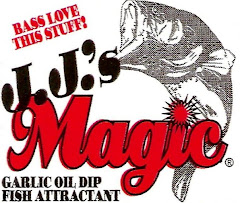How many times have you shopped for a new fishing rod at your favorite retailer, only to be faced with the following dilemma: You really love the blank action on rod A, but the handle on rod B fits your hand best, and the guides on rod C are what you've been looking for. Ever happen to you? I'd be willing to say yes!
Purchasing a custom rod means you're willing to spend a little more for that "Best Fit" scenario. I'd like to go over a few things to look for, as well as ask the builder, when considering a custom rod. By asking the questions, you'll save yourself a lot of heartache down the road.
One thing to remember, a custom builder works with stock rod blanks from various manufactures. Considering the high tech nature of graphite cloth and the machinery needed to produce a blank, it's not practical for a custom builder to produce his own blanks.
The 'custom' in a custom rod comes from the components, and how they're applied and assembled. This is what makes a custom rod!
After establishing with a potential customer what blank/technique he/she wants, I always like to start with the reel seat/handle assembly. You can have the most sensitive, light rod on the planet, but if the handle is uncomfortable, you've wasted not only yout time, but your money as well.
Too many factory rods (especially spinning rods) come with a reel seat that is too skinny for the average adult. Factory rods reel seats are meant to fit a wide variety of hand sizes. You only have one hand size, so why not get a reel seat that fits? For most adult males, a size 18mm spinning reel seat fits best...16mm is fine for a trout or ultralight rod, or a rod for those with smaller hands. The larger reel seats help eliminate hand cramping over the course of a day on the water. Generally, baitcasting reel seats come in 16mm or 17mm sizes. Since the majority of bass anglers palm the reel when retrieving, those sives will suffice.
Rear handle length can be discussed at this point with your builder, as well as wether you want a foregrip (very popular now, for good reason-increases sensitivity). Another popular feature among the factory guys now is the split rear grip...pioneered long ago by the custom builders! Ask your builder about that option, it really does make the rod feel lighter.
Choosing guides can be almost as daunting as shopping for bass lures! Let your builder know what type of line you'll be using. Mono and floro aren't hard on guide rings like braids, so standard aluminium oxide will do the job. Braids require the harder ring materials such as silicon carbide, alconite, nanolite, titanium oxide, etc. Any builder worth your time and money will make the proper recommendations. One more point, always be sure to ask your builder if he/she spines the rod. That's locating the rod spine (natural curvature of the blank). Placing the guides properly on the blank will assure peak rod performance.
The one area where function really doesn't come into play is guide wrap colors and other embellishment such as weaves, decorative wraps, personalization, and marbling. All these are purely aethstetic...this is where you can make your custom reflect your "True Nature"!!
Hopefully, these tips will help you to get the most out of your custom rod, you paid for it...you deserve to get the most out of it!
BY: Mark Burks
Subscribe to:
Post Comments (Atom)











No comments:
Post a Comment